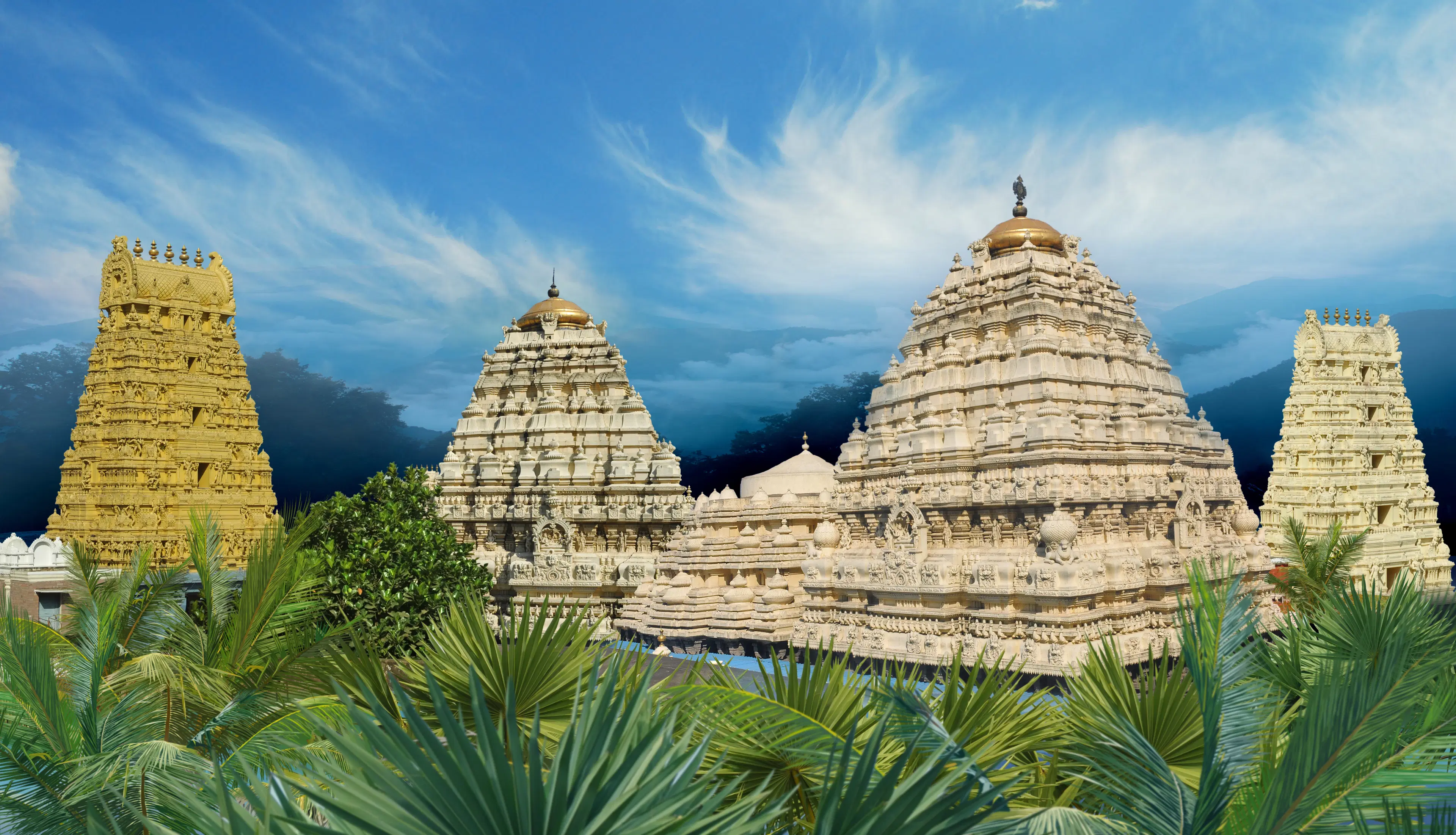
Hotels
•04 min read

Step into the mystical realm of Ekambareswarar Temple in Kanchipuram, where history, legend, and spirituality converge around a sacred mango tree. In this blog, you will explore 10 fascinating facts about this ancient tree, its role in Hindu mythology, and the temple’s rich historical heritage. Read on to uncover the secrets behind one of the most revered natural icons in Indian temple culture.
The sacred mango tree at Ekambareswarar Temple is believed to be over 3,500 years old. This living relic is deeply entwined with the temple’s identity and its presiding deity, Lord Shiva. In Hindu mythology, the tree is not merely an element of nature but a divine symbol representing the Earth. It stands as one of the Panch Bhoota Stalams, where each element—earth, water, fire, air, and space—is celebrated. Its enduring presence continues to inspire awe and reverence among devotees and visitors alike.
Legend has it that Goddess Parvati performed arduous penance under this mango tree in her quest to reunite with Lord Shiva. The tree’s four sprawling branches are said to symbolize the four Vedas, underscoring its holistic representation of divine knowledge and spiritual wisdom. This mythological tale not only enriches the tree’s sanctity but also cements its place in the lore of Kanchipuram temples.
Ekambareswarar Temple is one of the oldest and most celebrated Shiva temples in Tamil Nadu. Originally constructed by the Pallavas, the temple underwent significant enhancements under the patronage of the Chola and Vijayanagara dynasties. Each era added layers of artistry and devotion, making the temple a living canvas of South Indian history and architecture.
Over centuries, countless legends have grown around the sacred mango tree. Many devotees have experienced divine blessings and unexplainable miracles in its shade. The tree is often seen as a silent guardian of the temple, drawing pilgrims from far and wide in search of spiritual solace and a connection to the divine. Its mystical aura continues to captivate the hearts of visitors, reinforcing its enduring legacy.

Sacred trees have always played a pivotal role in Hindu temple traditions. At Ekambareswarar Temple, the mango tree stands as a testament to nature's intrinsic link to spirituality. It is venerated not only for its age but also for its role as a facilitator of worship and devotion. In many traditions, these trees are seen as manifestations of divine energy and as conduits for connecting with the natural world, embodying the essence of Hindu temple sacred trees.
Under the leafy canopy of the ancient mango tree, devotees engage in rituals that date back millennia. They tie colorful threads to the branches as symbols of their wishes and offer prayers for fertility, prosperity, and overall well-being. Special festivals and auspicious occasions see a flurry of activity around the tree, turning the temple courtyard into a vibrant celebration of faith and culture that has been preserved through generations.
The temple’s Dravidian-style architecture is an architectural delight with towering gopurams and intricately carved pillars. Every stone tells a story, and the layout of the temple speaks to centuries of craftsmanship and devotion. Among its myriad features, the sacred mango tree is seamlessly integrated into the temple complex, symbolizing the unity between nature and divine artistry.
Placed prominently within the temple courtyard, the mango tree is easily accessible to devotees. Its sprawling branches provide a serene space for quiet reflection and worship. The tree’s presence enhances the spiritual ambiance of the temple, offering a natural sanctuary that bridges the earthly and the divine. This alignment of nature and architecture is a unique hallmark of Ekambareswarar Temple and underscores the value of sacred spaces in Hindu traditions.
This ancient mango tree is not just a botanical marvel; it carries intriguing secrets. Remarkably, the tree is known to bear fruits that are believed to have four distinct tastes, symbolizing the four seasons. Despite its ancient age, the tree demonstrates an extraordinary resilience and adaptability, standing tall as a living monument to the temple’s storied past.
Modern science has also taken an interest in this venerable tree, noting its impressive longevity and unique biological features. Culturally, it serves as a powerful emblem of harmony and unity, bringing together diverse strands of myth, tradition, and community. Its continued prominence is a reminder of nature’s enduring role in nurturing both physical and spiritual life.

Did you know? The sacred mango tree at Ekambareswarar Temple is not just a tree but a living testament to the temple's spiritual legacy, attracting devotees from across the world for over three millennia.
The temple is one of the Panch Bhoota Stalams, representing the Earth element, and is home to a sacred mango tree believed to be over 3,500 years old.
Yes, Shiva Kanchi refers to the part of Kanchipuram where Ekambareswarar Temple is located, dedicated to Lord Shiva.
The goddess associated with the temple is Kamakshi Amman, a form of Goddess Parvati.
The temple was originally built by the Pallavas, with significant contributions from the Chola and Vijayanagara dynasties.
Yes, devotees perform rituals such as tying threads to the tree for wishes and offering prayers for fertility and prosperity.
In summary, the Ekambareswarar Temple in Kanchipuram is not only a vibrant hub of history and architectural brilliance but also a sanctuary where nature meets divinity in the form of its ancient mango tree. The tree’s spiritual significance, mythological origins, and enduring presence as a witness to centuries of devotion continue to inspire and attract pilgrims. It is a living emblem of sacred tree significance in Hindu temples, offering a glimpse into the deep cultural and religious traditions that define this sacred land.